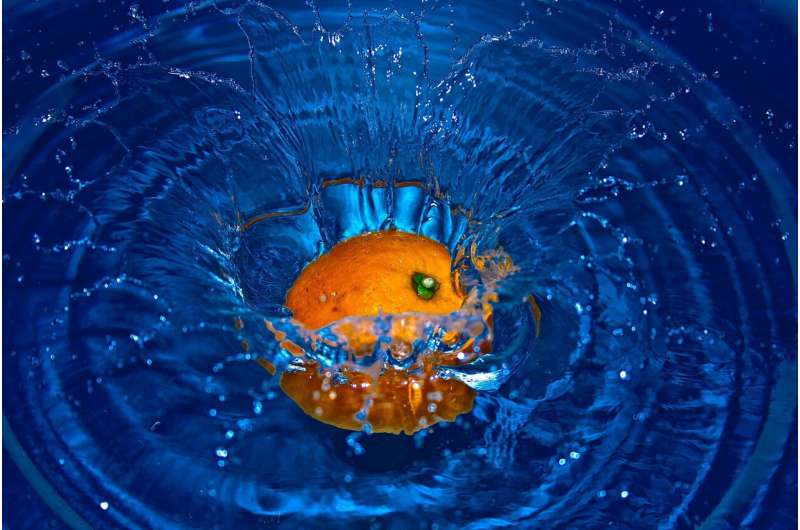Credit: Pixabay/CC0 Public Domain
Scientists have developed an environmentally-friendly way of boosting the production and heat stability of a natural blue coloring.
Used in everything from Smarties to gin, the blue coloring, known as phycocyanin, or spirulina extract, is in high demand as an alternative to artificial colorants.
Phycocyanin is produced by a blue-green algae called Spirulina—the preferred source for natural blue in a rapidly growing market for natural food and drink colorants.
Researchers discovered that a close relative of Spirulina can be engineered to produce a heat-stable form of the lucrative blue pigment at low temperatures, thus enabling industry to scale up its production.
Phycocyanin provides a natural alternative to artificial colourings, which are unpopular with consumers and have been increasingly criticized for their potential negative health impacts.
Its brilliant blue color is also attractive to the textile industry, and its anti-oxidant and anti-aging properties are in demand by the nutraceutical and cosmetic industries.
However, phycocyanin's use is limited because it is unstable at the higher processing temperatures common across many industries.
To tackle this problem scientists at the University of Edinburgh engineered the blue-green algae Synechocystis, a relative of Spirulina, to produce a more heat stable form of the blue pigment.
They achieved this by switching Synechocystis's genetic instructions for making phycocyanin, with that from another blue-green algae, Thermosynechococcus elongatus, that thrives at high temperatures.
These blue-green algae, known as thermophiles, are found in hot springs and produce a heat stable form of the pigment—but are difficult and more energetically expensive to cultivate than Spirulina.
The power-pairing combines Synechocystis's ability to produce high yields of phycocyanin at lower temperatures with its thermophile cousin's ability to make a heat-tolerant form of the pigment.
The advance tackles a key bottleneck in scaling up production of phycocyanin, allowing industry to produce higher yields of this heat-stable version of phycocyanin with lower energy costs.
The process drastically reduces carbon dioxide emissions by an estimated 791 metric tons—the equivalent of the annual output of 171 petrol-fuelled cars.
Global demand for natural blue coloring is continuing to experience considerable growth as adoption of natural colorants expands into new markets.
The researchers are working with Allgo Biosciences, a recently formed company of long-standing industry partner Tantillus Synergy Limited and sister company to ScotBio.
Allgo are tackling real world problems by engineering biology to go beyond the capabilities that are found in nature.
Dr. Alistair McCormick, Principal Investigator of the study and Reader in Plant Molecular Physiology and Synthetic Biology from the University of Edinburgh, says "it was exciting to show how compatible these pigments are between species that inhabit completely different ecological niches. This work illustrates well how engineering biology can be used to boost the production of natural products and expand their use into new industries."
Dr. Grant Gale, Head of Operations at Allgo Biosciences says "we are excited to explore these and other innovative synthetic biology technologies. We believe that bio-manufacturing is in its infancy and has huge commercial potential for the coming decades. We are very pleased to be able to continue these close collaborations with internationally renowned research groups and institutions."
The study, published in Metabolic Engineering Communications, was funded by UKRI, IBioIC and ScotBio.
More information: Anton Puzorjov et al, Production of thermostable phycocyanin in a mesophilic cyanobacterium, Metabolic Engineering Communications (2021). DOI: 10.1016/j.mec.2021.e00175
Provided by University of Edinburgh
























